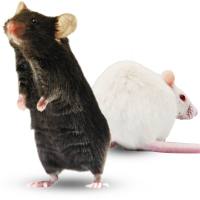When establishing animal models of Alzheimer’s disease (AD), the aim is to mimic (certain aspects of) the human condition. However, species, strain, and gender specific features interfere with this goal. Only a few species, like primates, dogs, and bears, spontaneously develop histopathological hallmarks of AD. Unfortunately, the use of these species for experimental research is limited by availability, economical and ethical reasons. Commonly used laboratory animals show age-related deterioration, but no AD-pathology. Transgenic models can give solace for this problem. Homology for AD-related genes is discussed for Caenorhabditis elegans , Drosophila melanogaster , Danio rerio , mice, and rats. Pros and cons of species-specific requirements for breeding and housing are argued. Effects of genetic background on pathology should be taken into consideration when studying AD in transgenic mouse models. Cognitive performance and behavior can differ between mouse strains, as well as immunology and vasculature. Strain-specific deficits in auditory or visual acuity or motor impairment can obfuscate measurements, and thus background strains should be selected cautiously. Female mice show greater variation in behavior according to estrus cycling than males, which is why males are often preferred for behavioral research. When studying gender-related differences in AD pathology or risk factors for dementia, both genders are to be compared. Gender-specific differences in learning and memory, aggression, and sexual behaviour should be borne in mind when phenotyping transgenic mice. In conclusion, this chapter provides an overview of background information to keep in mind when working with animal models of dementia.






